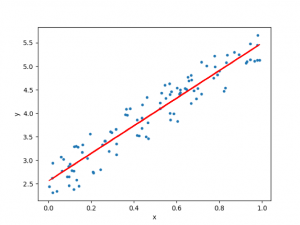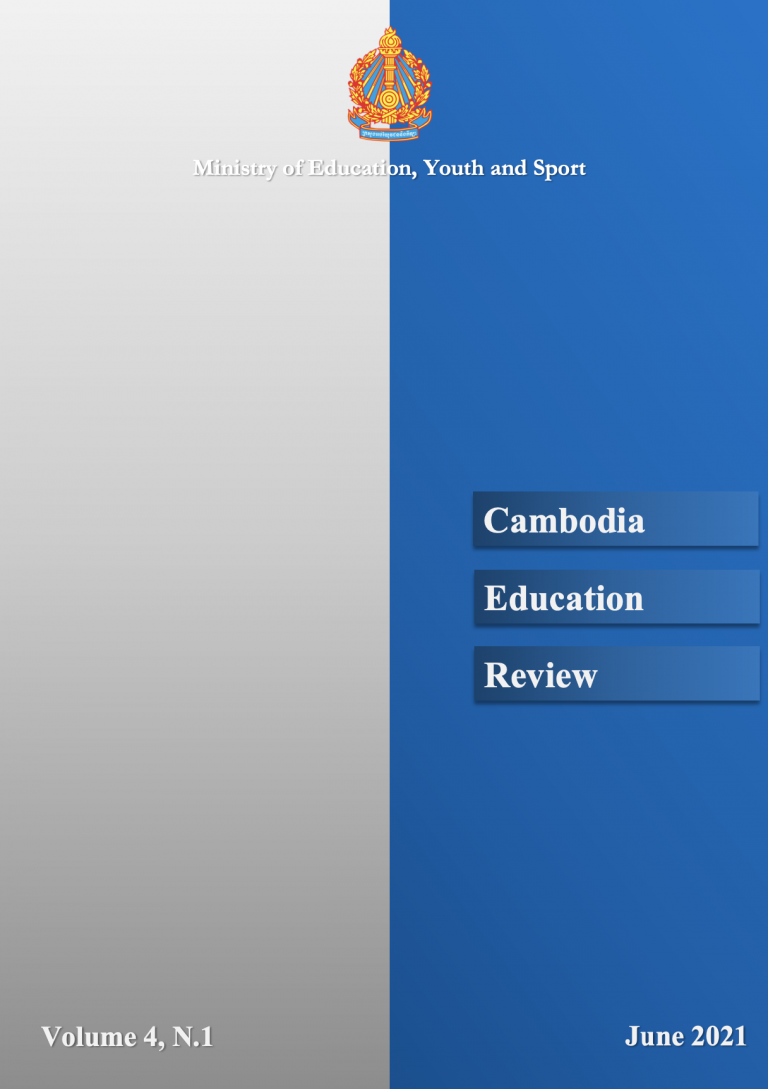Guidelines for Authors
Cambodia Education Review (CER) was incepted in 2016 and formally launched in 2017. It has been founded by the Education Research Council (ERC) at the Ministry of Education, Youth and Sport (MoEYS), a think tank comprising highly-committed scholars and professionals concerned with Cambodia’s education development.
CER is a bi-lingual (Khmer and English) and bi-annual publication and scheduled to be released in June and December every year. An issue include: one editorial, five original/research papers, one policy paper and one book review.
We are calling for research articles and dialogues related, but not limited, to the following key topics: (1) Education policy making process; (2) Education policy implementation; and (3) Educational policy analysis. We also consider papers in other topics in the fields of education in Cambodia and beyond. Both theorical and practical issues regarding education are the most welcome.
Submission of a manuscript denotes that the work has not been published before; it is not currently under consideration for publication elsewhere; and it has been approved by all co-authors and related and responsible authorities at the institutions where the study has been conducted. The publisher will not be held legally responsible should there be any claims for compensation. To submit your manuscript, please send it to cer.editor@moeys.gov.kh.
Article Structure
Authors are expected to adhere to the following structure. Sub-headings may be added under relevant sections.
- Abstract
- Introduction
- Conceptual framework/Literature Review
- Methodology
- Results/Findings
- Discussion
- Conclusion
- Reference
- Appendix (if any)
Template
A template has been designed to help you prepare your manuscript. It, however, does not give an exact representation of how the published article will look when it has been typeset. To save the template on your computer, click on the link below:
https://drive.google.com/file/d/1DcPo9jHtsuNqM4qxCQB5jCJR5bEsWLq4/view?usp=sharing
Title Page
Title of the paper should be written in no more than 12 words and should not contain abbreviations.
The title page should contain:
- The title
- Author’s name or authors’ names
- Institutional affiliations
- Email addresses
Type the title of the paper in upper and lowercase letters flashed left of the page.
The title should be written in:
- boldface
- 14-point Times New Roman
Authors’ names should be written beneath the title in:
- Normal
- 12-point Times New Roman
Note: Please put an asterisk (*) after the name of the corresponding author.
Authors’ affiliations should be written beneath the authors’ names in:
- Italic
- 10-point Times New Roman
Note: Please put an asterisk (*) before the affiliation of the corresponding author.
Abstract
An abstract of 200 to 300 words is required. The abstract should be an enlightening description, which succinctly presents the topic, rationale, study data, methodology, results and an argument. Authors should avoid using incomplete sentences, passive voices, unidentified abbreviations and references.
Keywords
Beneath the abstract, provide five keywords which can be used for indexing purposes.
Word Count
Your manuscript should be between 6,000 and 8,000 words (including the abstract, tables, figures and references).
Heading Formats
Headings should be written differently in line with heading levels as follows:
- Heading 1 should be written in boldface, 12-point Time New Roman.
- Heading 2 should be written in boldface, 12-point Time New Roman.
- Heading 3, 4, 5….should be written in Italic, 12 point-Times New Roman.
Text Format
Text should be written in
- Normal, 12-point Times New Roman
- Space: 1.5
- Margins: 1 inch or 2.54 cm
- When starting a new paragraph, each paragraph should be indented.
References
APA (American Psychological Association) references are widely used in the social sciences, education, engineering and business. For detailed information, please see the Publication Manual of the American Psychological Association, 6th edition, http://www.apastyle.org/ and http://blog.apastyle.org/
In a reference list | In-text citation |
1. Book with one author Ayres, D. (2000). Anatomy of a crisis: Education, development and the state in Cambodia, 1953-1998. Honolulu: University of Hawaii Press. | (Ayres, 2000) or Ayres (2000) |
2. Book with two authors Fraenkle, J. R., & Wallen, N. E. (2006). How to design and evaluate research in education (6th ed.). New York: Mc Graw Hill. | (Fraenkle & Wallen, 2006) or Fraenkle and Wallen (2006) |
3. Book with three to five authors Senge, P., Cambron-McCade, N., Locas, T., Smith, B., Dutton, J., Kleiner, A., (2012). A fifth discipline: Schools that learn. A fifth discipline field book for educations, parents, and everyone who care about education. New York: Crown Business. | (Senge et al., 2012) or Senge et al. (2012) |
4. Book or report by a corporate author e.g. organization, association, government department Royal Government of Cambodia, (2010). National strategic development plan: Updated 2009-2013: For growth, employment, equity and efficiency to reach Cambodia’s millennium development goals. Phnom Penh, Royal Government of Cambodia. | (Royal Government of Cambodia, 2010) Or (Royal Government of Cambodia [RGC], 2010). Then (RGC, 2010) |
5. Book chapter in edited book Pit, C., & Ford, D., (2004). Asian universities: Historical perspectives and contemporary challenges. In P.G. Altbach, & T. Umakoshi (eds.), Cambodian higher education: Mixed vision, (pp. 333-362). USA: The Johns Hopkins University Press. | (Pit & Ford, 2004) or Pit and Ford (2004) |
6. Conference paper online Buckley, B. M., Anchukaitis, K. J., Penny, D., Fletcher, R., Cook, E. R., Sano, M., . . . Hong, T. M. (2010). Climate as a contributing factor in the demise of Angkor, Cambodia. Proceedings of the National Academy of Sciences, 107(15), 6748-6752. doi:10.1073/pnas.0910827107 | (Buckley et al., 2010) or Buckley et al. (2010) |
7. Course handout/Lecture notes (electronic version) Stoddart, B., (2012). Developing Cambodian higher education. Power Point Presentation
| (Stoddart, 2012) or Stoddart, (2012). |
8. Thesis Smith, M., (2007). Patronage and corruption in Cambodian forestry. Master of Philosophy of Culture, Environment and Sustainability Thesis. Oslo University. | Smith (2007) or (Smith, 2007) |
9. Journal article (academic/scholarly) with DOI (NEW DOI format) Chen, C.Y., Sok, P., & Sok, K., (2007). Benchmarking potential factors leading to education quality: A study of Cambodian HE. Quality assurance in education, 15(2), 128-148. doi: 10.1108/09684880710748901 | (Chen & Sok, 2007) or Chen and Sok (2007) |
10. Journal article with no DIO Chhinh, S., (2003). Effect of pupil factor on mathematics achievement in Cambodian urban primary school. Asian Pacific Education Review, 4(2), 151-160. | (Chhinh, 2003) or Chhinh (2003). |
11. Personal Communication Eng, N. (2009). Higher education vision 2020. Power Point presentation to MoEYS, personal correspondence. Unpublished | (Eng, 2009) or Eng (2009) |
12. Webpage Destination Justice (2014). Cambodia: Higher education needs need to be boosted. Retrieved from http://destinationjustice.org/cambodiahigher-education-sector-needs-to- be-boosted-hun-sen-says/ | Destination Justice (2014) or (Destination Justice, 2014) |
Tables
- All tables are to be numbered using Arabic numerals.
- Tables should always be cited in text in consecutive numerical order.
- For each table, please supply a table caption (title) explaining the components of the table.
- Identify any previously published material by giving the original source in the form of a reference at the end of the table caption.
- Footnotes to tables should be indicated by superscript lower-case letters (or asterisks for significance values and other statistical data) and included beneath the table body.
- Avoid using vertical lines for tables, as shown below.
Table 1. Number of students, number of schools, pupil-teacher ratio, and pupil-classroom ratio
Particulars | Number of students | Number of schools | Pupil- teacher ratio | Pupil- classroom ratio | |
Total | Female | ||||
Primary | 2,022,061 | 974,231 | 7,144 | 43.8 | 47.3 |
Lower secondary | 585,971 | 303,645 | 1,699 | 20.4 | 50.0 |
Upper secondary | 279,480 | 143,460 | 486 | 22.1 | 48.8 |
Whole kingdom | 3,077,660 | 1,516,147 | 12,889 | 33.3 | 46.9 |
Urban area | 572,835 | 281,517 | 1,394 | 24.5 | 52.5 |
Rural area | 2,504,825 | 1,234,630 | 11,495 | 36.2 | 45.8 |
Source: EMIS, Education Statistics and Indicator 2016-2017
Figures
When you use figures, you need to cite the sources from where you extract such as books, journals or magazines. All illustrations should number consecutively (e.g., Fig. 1, Fig. 2, Fig 3) and add caption beneath the figure. Figure must be centered.

Abbreviations
Abbreviations should be spelled out at first mention and used consistently thereafter in the whole paper.
English Language
The manuscript must be written in British English.
Ethical Responsibilities of Authors
Cambodian Education Review (CER) strongly believes in maintaining the integrity of academic papers we publish, which relies on authors involved behaving ethically. Therefore, authors who wish to submit their work for publication should ensure that:
- the manuscript is originally written by them.
- the manuscript has not been previously published either partly or in full. However, it is acceptable if the new work is an expansion of previous work with the provision of transparency on the re-use of material to avoid self-plagiarism.
- the manuscript is submitted only to the journal, not to any others for simultaneous consideration.
- data is authors’ own or they have permission to use data reproduced in their manuscript.
- data and research results are true and not manipulated to support your conclusion.
- avoid plagiarism of data, text, or theories presented by others as if they were the authors’ own. It is noted that the journal may use software to screen for plagiarism.
- the sources where the materials are taken from are clearly cited.
- all individuals credited as authors have contributed sufficiently to the scientific work.
- all individuals credited as authors share collective responsibility and accountability for the results.
- all individual credited as authors and responsible authorities at the institute/organization where the work has been carried out have given consent for publication before the work is submitted.
- change of authorship (add, delete, or change in order of authors) is not allowed at the revision stage or after acceptance of the manuscript.
We encourage authors to refer to the Committee on Publication Ethics (COPE) website. If you have any questions or concerns about the journal-related ethical issues, please feel free to contact us at cer.editor@moeys.gov.kh.
After Acceptance
Accepted manuscripts will be made as open access articles which are freely and permanently accessible online.
